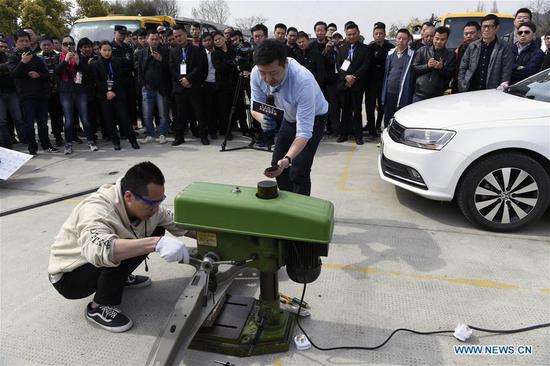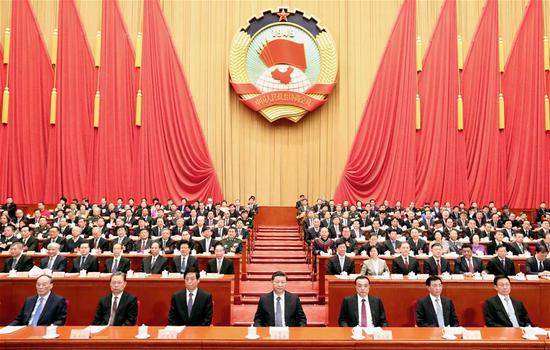
Residents gather for the handover event of a new resettlement housing project in Zhengzhou, Henan province. (Photo by Ma Jian/For China Daily)
In 2018, realty-related policies were tightened a record 400-plus times to rein in runaway property prices in Chinese cities.
Against such a backdrop, total revenue on land transactions across the nation hit a record 6.5 trillion yuan ($970 billion) in 2018, up 25 percent year-on-year, according to data from the National Bureau of Statistics.
The surge in land transactions was in line with the record home transactions in 2018, which were valued at 15 trillion yuan, up 12 percent year-on-year.
"From my understanding, the keynote for the property market will be keeping the market stable, to align with the central government's spirit," said Chen.
"For property micro controls, the central government has granted local governments more power to adjust policies, based on their respective situations. That means, local governments can adjust their real estate policy according to local conditions. This gives local governments more flexibility, while avoiding the systemic risks that could be brought by unified control," said James Shepherd, who heads China-related research at Cushman &Wakefield.
Barring a few cities' policy relaxations through minor controls, there was no major change in the central government's real estate regulation policy. Stable growth and risk prevention remain the cornerstone of the real estate market regulations, and the central government retains a strong say to control financing and the flow of funds.
"All the efforts already made and will be made, be they micro control policies or reforms-they will serve the government's ultimate goal of forming a long-term mechanism for a stable property sector. They will make sure China's real estate market is healthy, standardized, stable and continually developing," said Liu of Centaline.
According to Shepherd, the long-term mechanism for real estate stability will likely include five key elements: finance, land, taxation, investment and legislation.
The mechanism, even though unlikely to be established quickly, will aim to increase land supply, underpin the leasing market and restrain investment speculation through financial means.
This year, the government will likely focus on continuing to promote the long-term scheme in 16 key cities (four first-tier cities and 12 key second-tier cities), to be followed in the rest of the country.
Given the long-term nature of the mechanism, it will take a while for it to be explored fully and implemented carefully. So, results ought not to be expected in the short term, industry insiders said.


















































